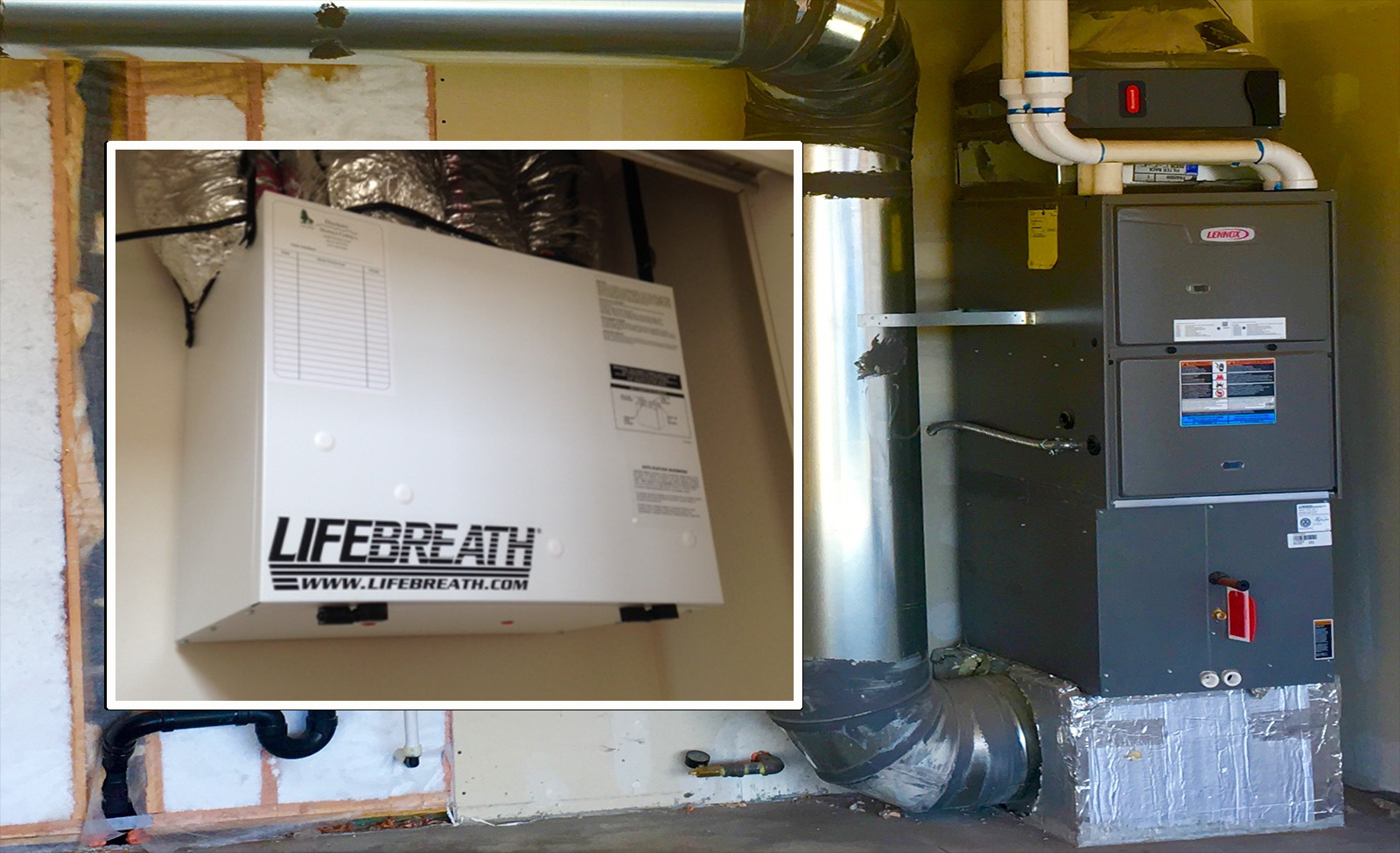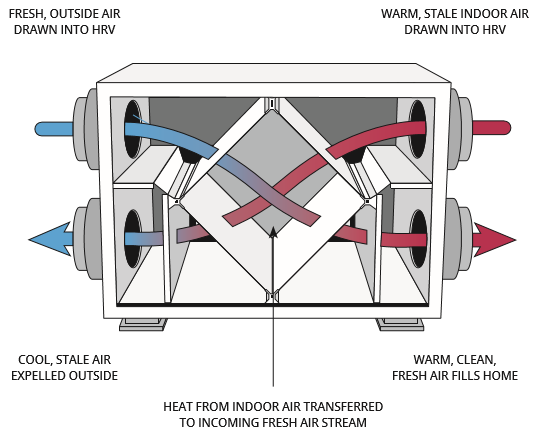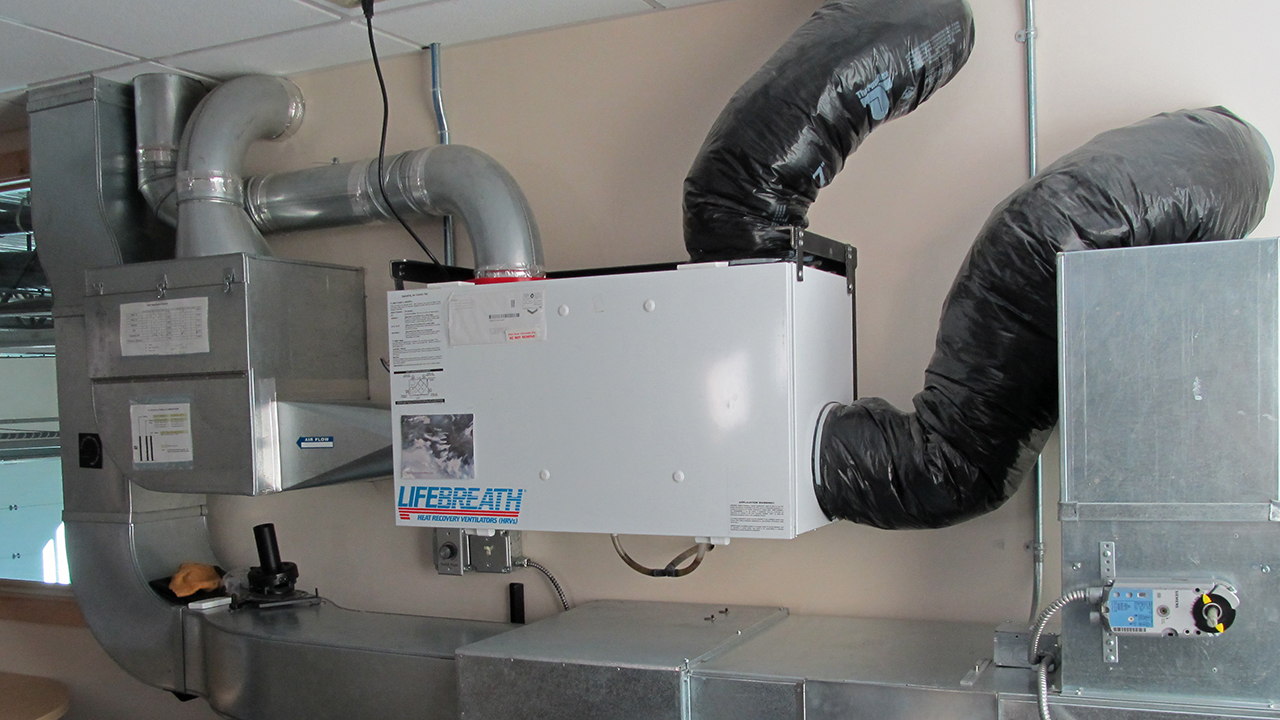The All-Inclusive Overview to the Uses of Heat Recovery Ventilation in Modern Buildings
Heat Recovery Ventilation (HRV) systems represent a considerable advancement in constructing technology (HRV Heat Recovery Ventilation). They provide a technique for exchanging stale indoor air with fresh outdoor air while lessening power loss. This technique not only enhances indoor air top quality however additionally contributes to power performance in both domestic and industrial buildings. Comprehending the numerous applications and advantages of HRV can disclose its important role in modern-day layout and sustainability initiatives. The ramifications of this modern technology are worth exploring additionally
Comprehending Heat Recovery Ventilation Solutions

Although lots of modern-day buildings prioritize energy effectiveness, comprehending warm recovery air flow (HRV) systems is essential for maximizing indoor air high quality and reducing energy usage. HRV systems function by transferring warm from stagnant interior air to inbound fresh air, properly maintaining comfortable interior temperature levels while lessening power loss. These systems are composed of a heat exchanger, fans, and ductwork that help with the circulation of air. Throughout winter months, HRV devices catch and reuse warm from the outward bound air, while in summer season, they can help cool down inbound air. By continuously exchanging air, HRV systems also reduce moisture and the focus of indoor pollutants. Proper setup and maintenance of HRV systems are vital for their effectiveness and effectiveness in enhancing overall structure performance and convenience.
Benefits of Heat Recovery Ventilation
Heat recovery ventilation systems offer many benefits that improve both power performance and indoor air quality in modern-day structures. By catching and reusing energy from exhaust air, these systems considerably minimize heating & cooling prices, causing reduced power usage. Furthermore, they maintain a stable circulation of fresh outside air, lessening the risk of indoor air toxins and irritants. This constant exchange aids regulate humidity degrees, stopping mold and mildew development and making sure a much healthier living setting. In addition, HRV systems contribute to sustainability goals by decreasing overall carbon impacts. Their ability to enhance air flow without sacrificing thermal convenience makes them a valuable addition to contemporary building style, promoting both financial and environmental benefits.
Applications of HRV in Residential Buildings
As homeowners significantly prioritize energy efficiency and indoor air high quality, the applications of warm recovery ventilation (HRV) systems in property buildings have ended up being much more common. HRV systems are specifically advantageous in snugly secured homes, where keeping fresh air flow is crucial for protecting against moisture buildup and indoor contaminants. They properly transfer warmth from outbound stale air to inbound fresh air, reducing power costs related to cooling and heating. In addition, HRVs can enhance comfort levels by regulating moisture and temperature. They are additionally versatile for numerous domestic designs, including single-family homes and multi-unit structures. Overall, incorporating HRV systems sustains lasting living techniques while making sure a healthier indoor atmosphere for occupants.
HRV in Business and Industrial Settings
In commercial and industrial setups, the execution of warmth healing ventilation (HRV) systems has come to be increasingly crucial for enhancing energy effectiveness and maintaining air useful content quality. These systems properly transfer heat from exhaust air to inbound fresh air, lowering the demand for added home heating or air conditioning. This not only reduces power expenses yet also contributes to sustainability efforts. Industries such as production, warehousing, and office complex profit substantially from HRV systems, as they aid regulate temperature and humidity degrees, making certain a comfy and efficient setting. In addition, HRV systems aid in getting rid of impurities and excess dampness, improving interior air high quality. As regulations around air top quality become more stringent, the fostering of HRV technology is most likely to expand, making it a crucial component of modern business and industrial infrastructure.
Future Patterns in Heat Recovery Ventilation Innovation

Frequently Asked Questions
Exactly How Does Heat Recovery Ventilation Impact Indoor Air High Quality?
Heat recovery ventilation greatly improves interior air high quality by constantly trading stagnant interior air with fresh exterior air while recuperating power. This procedure decreases pollutants, maintains ideal humidity degrees, and guarantees a much healthier atmosphere for owners.
Can HRV Equipments Be Mounted in Existing Buildings?
HRV systems can certainly be set up in existing buildings. Retrofitting may need alterations to ductwork and ventilation formats, however it substantially boosts power effectiveness and indoor air top quality, making it a feasible option for older frameworks.
What Upkeep Is Required for HRV Equipments?

Are There Specific Climates Where HRV Is A Lot More Efficient?
Heat recovery ventilation systems are specifically effective in environments with considerable temperature level distinctions in between seasons. These systems maximize power efficiency by recovering warmth from exhaust air, making them perfect for both chilly and reasonably warm environments.
How Do HRV Solutions Affect Power Costs?
